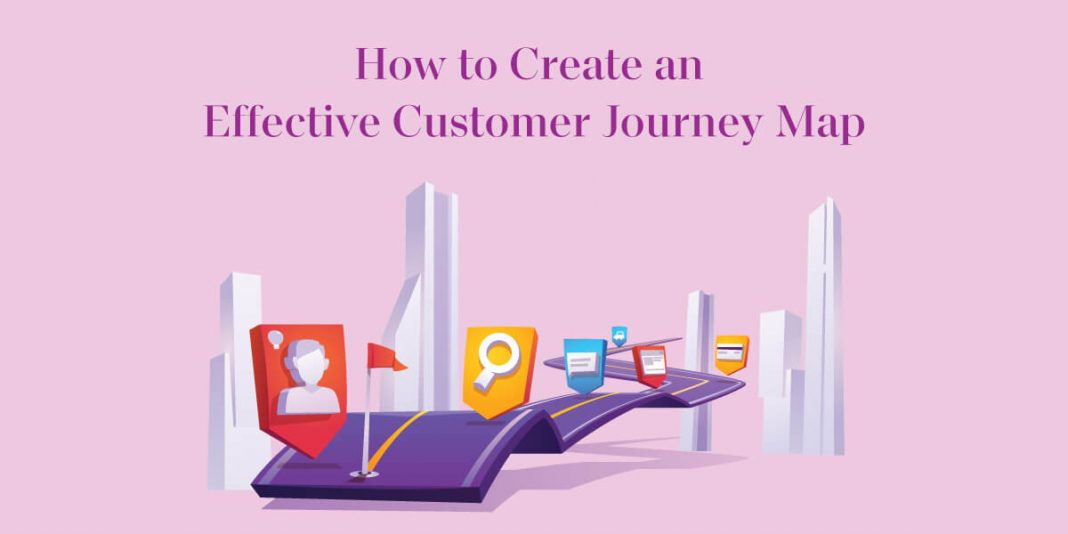Customer journeys may first appear straightforward: you offer a product, and the customers purchase it. However, the more closely you examine, you will find that the consumer journey is actually complicated.
Customers’ expectations are getting redefined every day. Customers are now communicating with businesses using more than 10 channels, making it difficult for companies to understand their behavioral patterns, expectations, and experience. So the issue is, how can companies match these demands and guarantee a seamless customer experience?
Customer journey mapping is a great method for comprehending and improving the customer experience.
What is a Customer Journey Map?
According to studies, organizations that make an effort to create good, meaningful experiences for their customers are more likely to gain loyal customers and enhance their bottom line. An effective customer journey map can help you boost your efforts!
A customer journey map is a blueprint of the steps your customer undertakes while engaging with your company. In other words, a customer journey map is a visual representation of customers’ experience with the company’s products and services that gives organizations a clue of improvement areas to smoothen every customer journey.
How to Create a Customer Journey Map?
An effective and efficient customer journey mapping can be broken down into five simplified steps.
1. Decide What to Measure
Before mapping the customer journey, have a clear motive of what you and your company wish to achieve by making one. Know your target customers and figure out the specific experiences you would want to highlight while mapping.
Without the right KPIs, setting goals is worthless. So set the apt metrics to measure the goals.
2. Define Customers’ Personas
The information that you will use to create a customer journey map will be derived from your customer’s personas. You can start this step by first knowing which buyer you are focused on and what their general wants and needs are while interacting with your company.
For creating personas that are accurate, you can take help from the feedback of the customers and the data from the customer analytics. Here are some useful ways to gather valuable information when defining your customers’ personas:
- Interact with customers on a personal level.
- Use software like Google Analytics, etc.
- Conduct surveys at regular intervals.
- Put yourself in the customer’s situation.
- Interview employees.
3. Plot Your Touchpoints
Within each phase, at what point does your customer interact with your company? There are many unique stages that a customer has to undergo. Touchpoints will be any contact points between the organization and its customers. The stages that you consider for your map depend a lot on what is the goal you are trying to accomplish and what you want it to display.
When dealing with touchpoints, make a note to include the direct ones and the indirect ones. Each touchpoint holds equal importance. Because every touchpoint has the potential to generate consumer conversion, it is vital to depict all of the options.
4. Map the Current Buyer Journey
After you have successfully identified the customers and their touchpoints, you may map the processes that the customers go through while purchasing a product or service. Consider all variations of the buyer’s journey, such as different types of sales channels, small and large volume transactions, and several product versions. While proceeding with this step, ask questions to yourself, like what the customer is prompted to do and feel when the interaction between him and the company takes place.
5. Ideal Buyer Journey
The ideal buyer journey signifies the journey that you desire the customers to take; it may vary from the actual journey. Particularly if you launch new items or services and the ideal buyer path shifts as a result. On your maps, be sure you depict the ideal buyer path alongside the actual buyer journey.
Conclusion
Creating customer journey maps will increase the visibility into the experience that the customer takes while interacting with your company. It improves the capacity to reach out to new personas and enhances cross-unit functionality inside the business.
Customer journey mapping is a never-ending process; it needs to be regularly maintained and updated. There are chances that your customer journey map will stay static for a long time as customers’ experiences keep changing based on the company’s new products or amendments. When generating and editing your journey maps, make use of all accessible resources and keep your customer in mind from start to finish.
